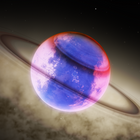|
SpaceEngine FAQ
|
|
| Billy_Mayes | Date: Tuesday, 13.08.2013, 12:01 | Message # 16 |
 Pioneer
Group: Users
 Finland
Finland
Messages: 485
Status: Offline
| Quote (DoctorOfSpace) Bear in mind that LOD 1 and 2 are no way practical, as they take so long to load, so it's best sticking to LOD -1 or -2 when cruising around, until you want to get a pretty screenshot.
That's strange. I have mine constantly on LOD 1 and it loads pretty quickly.
And I have a really bad computer too.
AMD Phenom II X4 955 3.2 GHz Quad-Core - AMD Radeon HD 6950 2GB VRAM - 4GB RAM - 1680x1050 75 Hz Samsung screen
|
| |
| |
| RockoRocks | Date: Friday, 06.09.2013, 18:19 | Message # 17 |
 World Builder
Group: Users
 Belgium
Belgium
Messages: 674
Status: Offline
| Hello all, I have a question here. I tried running Space Engine on another computer for the first time, and I noticed there was a cool starting location. Does anybody know the coördinates for the starting location of Space Engine?! You know, the planet you see when you start up Space Engine for the first time.. I want to go back there.
I will be inactive on this forum for the time being. Might come back eventually
AMD AR-3305M APU w/ Radeon HD 1.90 GHz 6,00 GB RAM
|
| |
| |
| HarbingerDawn | Date: Friday, 06.09.2013, 18:37 | Message # 18 |
 Cosmic Curator
Group: Administrators
 United States
United States
Messages: 8717
Status: Offline
| It might be one of the pre-saved locations in the locations (F6) menu. Try looking through those. Or you could just look in the user.cfg file from your original download of SE assuming you didn't delete it, or you could download it again.
All forum users, please read this!
My SE mods and addons
Phenom II X6 1090T 3.2 GHz, 16 GB DDR3 RAM, GTX 970 3584 MB VRAM
|
| |
| |
| RockoRocks | Date: Friday, 06.09.2013, 18:50 | Message # 19 |
 World Builder
Group: Users
 Belgium
Belgium
Messages: 674
Status: Offline
| Thank you HarbingerDawn, i found and it's appearantly RS 8404-1796-9-1283-105 B4! It really is a beatiful location..
I will be inactive on this forum for the time being. Might come back eventually
AMD AR-3305M APU w/ Radeon HD 1.90 GHz 6,00 GB RAM
|
| |
| |
| neutronium76 | Date: Friday, 06.09.2013, 19:41 | Message # 20 |
 World Builder
Group: Users
 Greece
Greece
Messages: 718
Status: Offline
| Can the Minimum FOV in User.cfg be decreased even more? So that Max zoom is increased? Default value is 2.777778e-6
PC1:Core i7 970@3.34GHz, 6 cores/12 threads, 12GB DDR3 RAM@1.34GHz, 2x(SLI) GTX-580 GPUs 3GB VRAM(GDDR5)@1GHz, OS:Win7x64SP1
PC2:Core2Quad X9770@3.2GHz, 2 cores/4 threads 4GB DDR2 RAM@1GHz, GTX-285 GPU 1GB VRAM(DDR3)@1.24GHz, OS:WinVistax64SP2
|
| |
| |
| HarbingerDawn | Date: Friday, 06.09.2013, 19:47 | Message # 21 |
 Cosmic Curator
Group: Administrators
 United States
United States
Messages: 8717
Status: Offline
| Quote (neutronium76) Can the Minimum FOV in User.cfg be decreased even more? So that Max zoom is increased? Default value is 2.777778e-6
You can always try it and find out...
All forum users, please read this!
My SE mods and addons
Phenom II X6 1090T 3.2 GHz, 16 GB DDR3 RAM, GTX 970 3584 MB VRAM
|
| |
| |
| QuietlyConident | Date: Saturday, 07.09.2013, 15:05 | Message # 22 |
|
Astronaut
Group: Users
 United Kingdom
United Kingdom
Messages: 54
Status: Offline
| I know that by switching between starbifurication FALSE and starbifurication TRUE you totally change what planets are generated in various systems. Are there any other ways to change settings, so that a new planetary generation "seed" is produced? Let's say I've run out of interesting planets within 20ly. of the Earth. Changing starbifurication gives me a whole new set of planets to look at (and of course messes with the binary generation). Are there any other settings you can use to make a third set, different from the two previous?
Edited by QuietlyConident - Saturday, 07.09.2013, 15:07 |
| |
| |
| HarbingerDawn | Date: Saturday, 07.09.2013, 17:52 | Message # 23 |
 Cosmic Curator
Group: Administrators
 United States
United States
Messages: 8717
Status: Offline
| QuietlyConident, this should have been posted here. Also, that's because of a bug: disabling the bifurcation in this version disables the generation of all multiple star systems in the universe. Normally it should not affect procedural system generation.
Quote (QuietlyConident) Are there any other ways to change settings, so that a new planetary generation "seed" is produced?
No. SpaceEngineer will have to comment on this bit, but I'm pretty sure that he has no plans to add that capability to the SE Planetarium software (what we're all using).
Quote (QuietlyConident) Let's say I've run out of interesting planets within 20ly.
That's a very small volume. SE covers the entire universe, why not explore other places? Even the planets we've discovered exist within a radius over 100 time that. Or if you're looking for something specific to be close to Earth (for working on fiction or something) you could always make it yourself.
All forum users, please read this!
My SE mods and addons
Phenom II X6 1090T 3.2 GHz, 16 GB DDR3 RAM, GTX 970 3584 MB VRAM
|
| |
| |
| QuietlyConident | Date: Sunday, 08.09.2013, 00:45 | Message # 24 |
|
Astronaut
Group: Users
 United Kingdom
United Kingdom
Messages: 54
Status: Offline
| Thanks for answering my question. I didn't realise that it was a bug. It would be kind of nice to have a feature to change the seed (like how the seed changes between versions). Sometimes you find a system you really like the, say, name or location of but it has cruddy planets.
Quote (HarbingerDawn) That's a very small volume. SE covers the entire universe, why not explore other places? Even the planets we've discovered exist within a radius over 100 time that. Or if you're looking for something specific to be close to Earth (for working on fiction or something) you could always make it yourself.
Yes I do know SE covers the entire Universe. But if you use SE for scifi worldbuilding like I do, you kinda want to confine the radius to something a bit believable (say, 20ly). Currently, in both starbifurican FALSE and TRUE the planets with life within about 30ly of earth are all a bit awful; either tidally locked or weird colours or the system is wrong. I know I could go in and modify the system myself, yada yada. I have tried, and it is fairly difficult. It'd be nice to have a way to generate a new seed.
|
| |
| |
| HarbingerDawn | Date: Sunday, 08.09.2013, 00:52 | Message # 25 |
 Cosmic Curator
Group: Administrators
 United States
United States
Messages: 8717
Status: Offline
| Quote (QuietlyConident) But if you use SE for scifi worldbuilding like I do, you kinda want to confine the radius to something a bit believable (say, 20ly)
What I like to do regarding such things (this goes back to my days using Celestia, which of course lacked procedural planet generation) is to use the program to get information about nearby stars and planets, and use that as the basis for my own creations, rather than just borrowing everything I find wholesale. Anyway, any systems you find that you kinda like but aren't quite right for the purposes of the universe you're constructing can be altered to fit your needs; just export the script for that system and make it into a catalog and change things to your liking.
All forum users, please read this!
My SE mods and addons
Phenom II X6 1090T 3.2 GHz, 16 GB DDR3 RAM, GTX 970 3584 MB VRAM
|
| |
| |
| SpaceEngineer | Date: Sunday, 08.09.2013, 15:05 | Message # 26 |
 Author of Space Engine
Group: Administrators
 Russian Federation
Russian Federation
Messages: 4800
Status: Offline
| Making configured seed is not difficult, I may add such menu in SE. But this may confuse people who tried to go to location posted by someone else, and forgot they have changed seed.

|
| |
| |
| Salvo | Date: Sunday, 13.10.2013, 18:56 | Message # 27 |
 Star Engineer
Group: Local Moderators
 Italy
Italy
Messages: 1400
Status: Offline
| SpaceEngineer, how can the position and other things in SE being so accurate in such big area?
I mean: How it's possible that if you travel many MP away from earth, you can still change the scale so much to "walk" freely on a planet without any kind of "lagging"?  (due to floating point precision) (due to floating point precision)
The universe is not required to be in perfect harmony with human ambition.
CPU: Intel Core i7 4770 GPU: ASUS Radeon R9 270 RAM: 8 GBs
(still don't know why everyone is doing this...)
Edited by Salvo - Sunday, 13.10.2013, 18:56 |
| |
| |
| SpaceEngineer | Date: Sunday, 13.10.2013, 21:53 | Message # 28 |
 Author of Space Engine
Group: Administrators
 Russian Federation
Russian Federation
Messages: 4800
Status: Offline
| Using hierarchic coordinate system. I.e. planets position/rotation are calculated in double precision float relative to system barycenter (it have coordinates (0,0,0)), system barycenter is stored in single precision float (that's enough) relative to galactic center (it already have coordinates (0,0,0) in this reference frame), and galaxies coordinates is stored in single precision float relative to universe origin (that is the Sun  ) )
Camera position is stored in 64.64 fixed point number, that is used to precise calculation of a position relative to local reference frame (galactic and planetary system), to avoid lost of precision. It is possible to set coordinates of the camera with precision of 1 mm in the scale range of 15000 gigaparsecs. However I will shift it down to 1 micron - 15 gigaparsecs, for better precision on the small scale.

|
| |
| |
| Salvo | Date: Monday, 14.10.2013, 14:22 | Message # 29 |
 Star Engineer
Group: Local Moderators
 Italy
Italy
Messages: 1400
Status: Offline
| Quote SpaceEngineer (  ) Using hierarchic coordinate system. I.e. planets position/rotation are calculated in double precision float relative to system barycenter (it have coordinates (0,0,0)), system barycenter is stored in single precision float (that's enough) relative to galactic center (it already have coordinates (0,0,0) in this reference frame), and galaxies coordinates is stored in single precision float relative to universe origin (that is the Sun smile )
Camera position is stored in 64.64 fixed point number, that is used to precise calculation of a position relative to local reference frame (galactic and planetary system), to avoid lost of precision. It is possible to set coordinates of the camera with precision of 1 mm in the scale range of 15000 gigaparsecs. However I will shift it down to 1 micron - 15 gigaparsecs, for better precision on the small scale.
Cool 
The universe is not required to be in perfect harmony with human ambition.
CPU: Intel Core i7 4770 GPU: ASUS Radeon R9 270 RAM: 8 GBs
(still don't know why everyone is doing this...)
|
| |
| |
| JCandeias | Date: Monday, 14.10.2013, 15:46 | Message # 30 |
 Pioneer
Group: Translators
 Portugal
Portugal
Messages: 387
Status: Offline
| Hi. I have a couple of questions regarding reference planes for orbits.
From what I've checked, there are two reference planes in SE: the ecliptic and the equator. I haven't found any references to more, although I could think of a few (galatic, f.i.). My questions are:
1- What is the default reference plane, i.e., the one (or ones?) used when no reference plane is determined in catalogue files? I already know that for stuff orbiting planets and moons it's the equator of the body being orbited, but how are things set up for stuff orbiting stars and other stellar objects?
2- Can the equatorial reference plane be used for star systems, using the star's equator as reference? Or are we bound to the ecliptic there? Astronomically, it makes total sense to use the ecliptic, but it'd be a lot more practical for those who want to build their own systems if one could use the star's equator.
They let me use this!

|
| |
| |